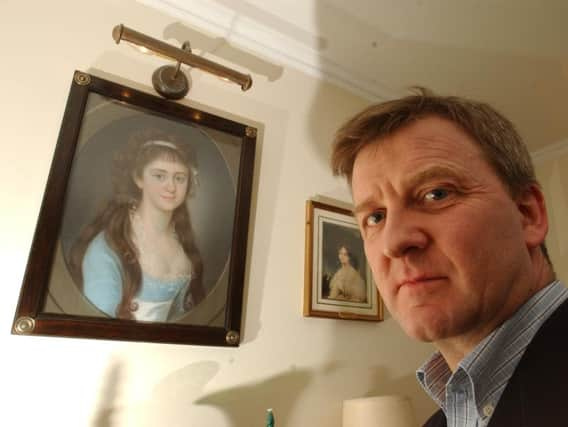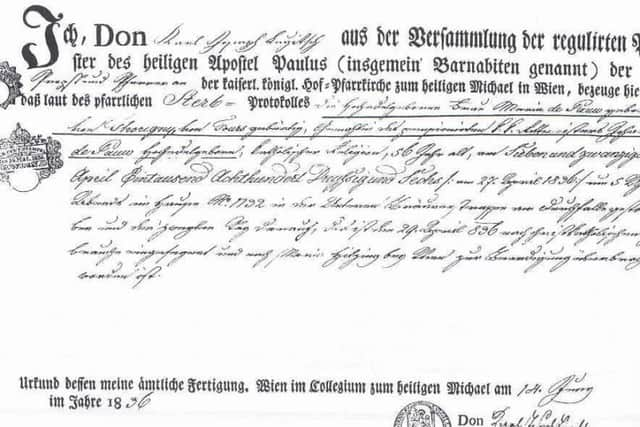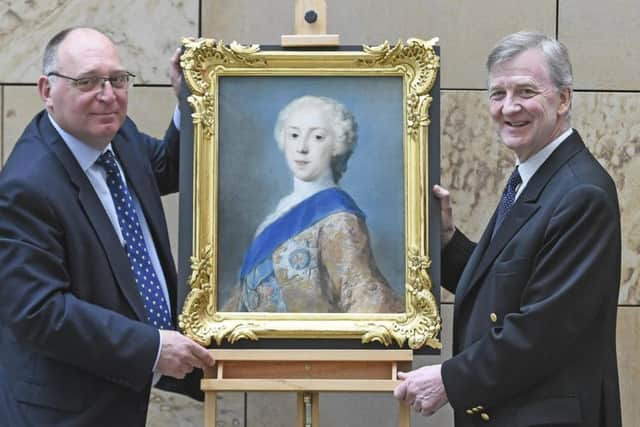The Polish art historian who claims to be a blood relative of Bonnie Prince Charlie


At the death in 1807 of Bonnie Prince Charlie's childless junior brother Henry Benedict Stuart, the House of Stuart, one of Europe's oldest royal families, was brought to an end.
But Peter Pininski, an art historian and author based in Poland, reckons the Stuart line is very much alive and well and that he is living proof of its survival.
Advertisement
Hide AdAdvertisement
Hide AdPeter spent the best part of five years poring over his family history in a bid to strengthen his claim to sharing the same bloodline as Jacobite hero Prince Charles Edward Stuart, the Young Pretender, whose attempt to secure the British throne from the grasp of the Hanoverians ended in horrific defeat at Culloden in 1746.


After scouring twenty archives in more than half a dozen countries, Peter published his findings in a book: The Stuarts’ Last Secret. The publication hit shelves in the UK in April 2002 and caused quite a stir.
Speaking to Scotland on Sunday at the time, Pininski said: “I suppose I was unnerved at times during my research - there were a large number of very important pieces of evidence almost dropping into my hands. Many times I found myself thinking, ‘come on, sober up.’”
Contemporary letters, baptismal forms, birth records and death certificates were among the "very important" pieces of evidence which suggested to Peter that the aforementioned Marie de Thorigny, was in fact the illegitimate granddaughter of Bonnie Prince Charlie.


The son, who was named Charles after his grandfather, died without fathering children himself, while next to nothing was known of his two sisters except only that they had existed.
But according to Peter’s findings, the daughters, including Marie-Victoire, or Marie de Thorigny as she was more formally known, had their true identities concealed due to their being the illegitimate offspring of a Roman Catholic archbishop.
And Marie's mother Charlotte was keen to veil her childrens' Stuart heritage too, to avoid attracting the wrong kind of attention during a century infamous for its turbulent politics.
Regardless, and though it was kept a secret her entire life, the maternal lineage of Marie de Thorigny, who believed she was the daughter of Prince Ferdinand's brother, meant she was of royal blood.
Advertisement
Hide AdAdvertisement
Hide AdSpeaking upon the publication of his findings, Pininski, who is convinced he is a six-times-great-grandson of Charles Edward Stuart, said the weight of evidence uncovered more than supports his claim, though admitted he is aware of how it might be viewed by the wider world.
"Europe’s lunatic asylums are full of people who think they’re Napoleon’s grandson," Pininski once quipped.
In a separate interview, he commented: "Of course anyone who professes a link to the Stuart family is subjected to scrutiny because the field of research has been plagued by charlatanism.
"But what I would say about my book is that it is based on the documentary evidence which I have unearthed around Europe and any historian can verify the documents because they are on public display in the archives."
His claims were supported by a raft of historians and academics, including Professor Bruce Lenman, Professor of Modern History at St Andrews University, who contributed to Pininski's book with a foreword.
"There have been rumours for years that Charlotte Stuart, who looked after the prince in his old age and who was claimed as his child, had children of her own," he said. "And there were rumours about Cardinal de Rohan and his involvement in affairs."
But Edwards poured cold water on any claim Pininski might have to the British throne.
"This is all very interesting but it will not make one bit of difference. Elizabeth is looking very comfortable on the throne," he commented at the time.
Advertisement
Hide AdAdvertisement
Hide AdOne person who believed Peter Pininski's succession rights were quite valid, however, was the late Scots historian John Sibbald Gibson.
"He could accede to the throne of Britain if the bar on Catholics was removed," John told The Guardian in 2002.
Yet, regardless of what 'rights' he may have, Peter Pininski, who visited Edinburgh this April to unveil a rare portrait of Bonnie Prince Charlie at the National Museum of Scotland, has never expressed a desire to challenge the House of Windsor.
He commented: "I would dearly like to stay right away from Stuart claimant-type charlatanism, because it’s not what I find interesting."
Alternative claims
The accepted senior heir to the House of Stuart is Duke Francis of Bavaria, who can draw a marital line through his family tree that links back to Princess Henrietta (1644-1670), the youngest daughter of King Charles I.
Despite being considered by modern-day Jacobites to be the rightful heir to the British throne, the 85-year-old Duke has routinely distanced himself from such discussions. Pressed on the subject, a spokesman for Duke Francis said: "The Duke generally does not comment on issues concerning his familiar relationship to the Royal House of Stuart."
Edinburgh-based writer Michael Stewart believes he is a direct descendent of Bonnie Prince Charlie through one of the Young Pretender's illegitimate sons and reckons his bloodline claim is superior to that of Peter Pininski - and anyone else for that matter.
Belgian-born Michel Roger Lafosse, who styles himself as Prince Michael of Albany, said: "There are 1,500 legitimate descendants of James VI and they all have a better claim to the throne than the Queen.
"My claim is based on primogeniture, that I came from the first born and am therefore first in line."
